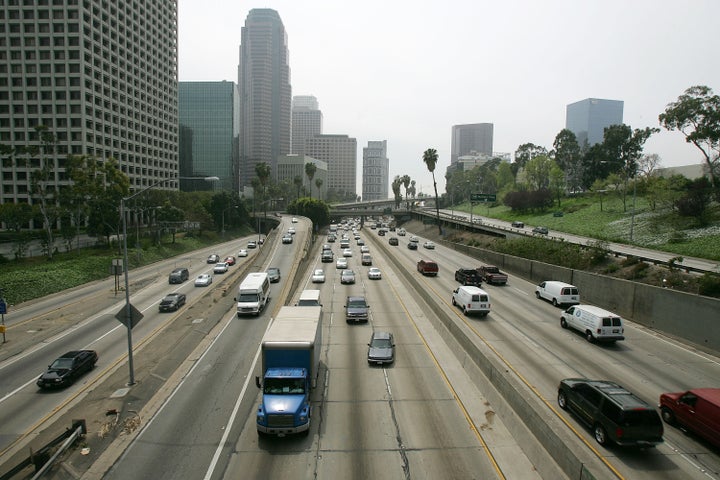
The Environmental Protection Agency tightened fuel mileage rules on new cars and light-duty trucks Monday, reversing a Trump-era policy and signaling how Joe Biden’s administration may end up cutting emissions while its efforts to pass a climate law stall in Congress.
The new rule will require automakers to achieve an average of at least 55 miles per gallon fleetwide by 2026, a sizable increase over the standard of 40.4 mpg set during Donald Trump’s presidency.
Though that two-digit difference seems small, the Trump-era rule — itself a rollback finalized during the pandemic last year of the standards set under Barack Obama’s administration — took a 10-digit toll on the climate. The standard set the stage for American automobiles to pump an additional 1 billion metric tons of carbon into the atmosphere over their life spans on the road. That nearly equals the annual emissions of Japan, the world’s fifth-largest source of planet-heating carbon dioxide.
Automobile tailpipes spew the largest share of the United States’ climate-changing pollution, in addition to loads of fine particulate matter that trigger breathing problems and shorten lives particularly in neighborhoods near highways.
“We followed the science, we listened to stakeholders, and we are setting robust and rigorous standards that will aggressively reduce the pollution that is harming people and our planet — and save families money at the same time,” EPA Administrator Michael Regan said in a statement.

The EPA estimates that by midcentury, the new standards will avert more than 3 billion tons of planet-warming emissions — more than half of the total U.S. carbon dioxide emissions in 2019.
The rule serves as a sort of stopgap measure, meant to make vehicles as efficient as possible through the next four years before enacting more aggressive regulations aimed at decarbonizing the U.S. auto fleet by the mid-2030s. The rule was pushed forward at an unusually hasty pace to ensure that the regulation was complete by December, allowing it to come into force for 2023 vehicle models.
“You can never go back and get the reduction I’d helped set for 2021 and 2022. We lost those two years under Trump,” said Jeff Alson, a former senior engineer and policy adviser to the EPA’s Office of Transportation and Air Quality, who had helped write the Obama-era regulations. “This rulemaking recaptures what would have been the lost year of 2023.”
The final rule is actually slightly stronger than what the EPA initially outlined in August, with standards for 2026 models about 6% higher than what the agency first proposed. It’s also forecast to deliver deeper cuts than what the original Obama regulation would have achieved.
Still, it’s only a first step, Alson said. He said he expects the EPA to complete another, far more aggressive automobile standard for vehicles made after 2027 by the end of 2022 or the start of 2023.
“The real key will be in that second rulemaking for 2027. That’s the chance the Biden administration has to go way beyond what Obama did and start to seriously achieve the type of levels we need.”
- Jeff Alson, a former senior engineer and policy adviser to the EPA’s Office of Transportation and Air Quality
“The agency got about as much as they could get under these four years, and the real key will be in that second rulemaking for 2027,” Alson said. “That’s the chance the Biden administration has to go way beyond what Obama did and start to seriously achieve the type of levels we need.”
Monday’s announcement comes as Biden faces mounting pressure to take unilateral action to confront the climate threat. Over the weekend, after months of contentious negotiations, Sen. Joe Manchin (D-W.Va.) announced he would not vote for Biden’s social spending package, putting a dagger through what many see as a rare opportunity for Democrats to pass meaningful climate legislation. Although key climate provisions had already been stripped from Biden’s Build Back Better Act during negotiations, it still included more than $550 billion in clean energy and climate investments.
“I hope that Congress will one day pass laws to slow the climate crisis,” Jennifer Rokala, executive director of the Center for Western Priorities, said in a statement Sunday. “Until then, it’s up to the administration to take every action possible, as quickly as possible.”
CORRECTION: This story was updated to correct the misspelling of Jeff Alson's name.
